The species of Afrolimna Cogan and Oedenopiforma Cogan, and of the limbata group {Paralimna), are also reviewed. It consists of all the taxa previously included in the tribe Notiphilini Bigot, with the exception of the genus Notiphila Fallen.
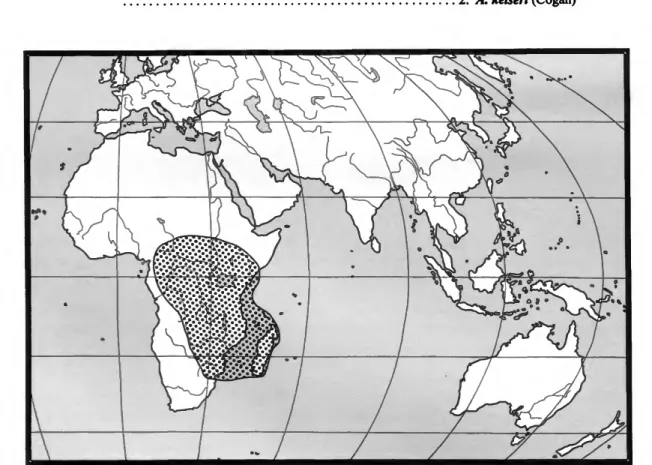
Afrolimna carolinika (Cogan), new combination
The parafacial at the anterior margin of the eye is narrow, the width much less than the length of the 1st flagellum. Ocellar surfaces long, length 2-3 times the distance between anterior and posterior eyes, mostly inclined and slightly divergent; outer vertical setae relatively long, about % or more length of inner vertical setae.
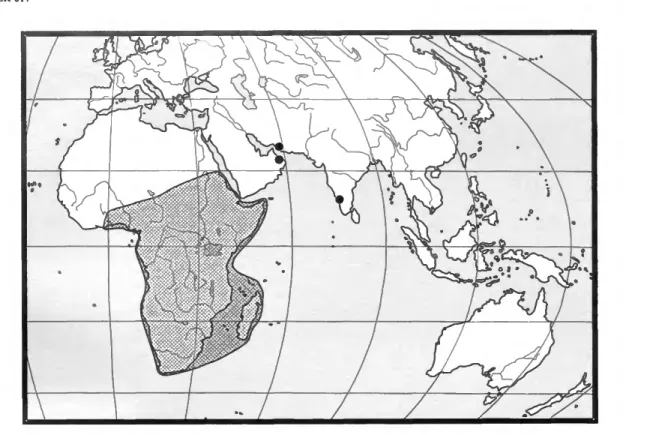
Corythophora longipes Loew
Catepisternal seta well developed, subequal to notopleural seta; 2-5 gray tergites on ventral side, lacking black brown spot; anepisternum mostly gray, mostly with brown spots near middle; 1 well-developed anepisternal seta on posterior margin (Oriental) 6. Thorax: Mesonotum generally mottled, gray to blackish gray, especially peripherally and along setal traces, with bases of setae blackish brown; scutum with some black brown to black gray areas sometimes visible posteriorly; gray areas.
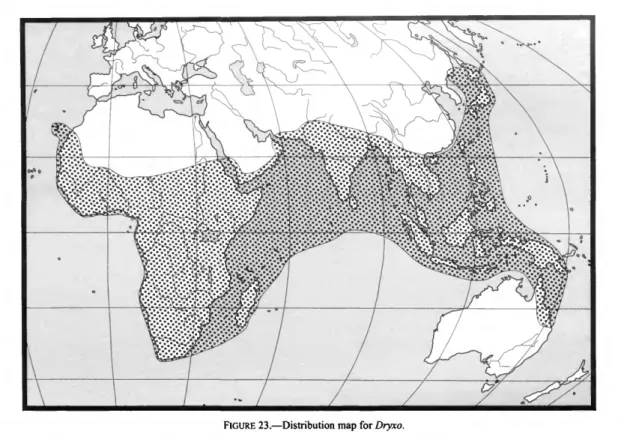
Dryxo digna Osten Sacken
Thorax: Mesonotum with small dark brown spots at base of setae and setulae, 2 large, somewhat triangular to square dark brown spots toward posterior margin of scutum, varying amounts of dark brown areas medially and along setal spurs (none consistently expressed), and 2 spots on scutellum at base of apical scutellar setae; postsutural supra-alar seta greatly reduced or absent; anepisternum either lacking moderately long slender setae along posterior margin or bearing 1 small slender seta; catepisternal seta usually greatly reduced, much weaker than notopleural seta, or absent. Abdomen: Generally whitish gray and lacking bands, but with some brown to golden brown along the outermost posterior margin; sometimes tergites 2 and/or 3 with some dark brown irregular maculations anterolaterally; 1st tergite with sparse, inconspicuous, dorsally erect setulae.
Dryxo lispoidea Robineau-Desvoidy
Thorax: Mesonotum generally blackish brown; scutum with some gray areas marginally, along transverse suture, and as small, usually short striae along acrostichal and dorsocentral paths; shield with medial line and lateral margins whitish gray to gray except for dark brown areas around base of lateral shields; anepisternum with dark brown spot near middle. Abdomen: Tergites 1 and 2 mostly grey, posterior margin of tergite 2 dark brown and sometimes with a dark brown medial band; tergites 2-5 with dark brown band along anterior margin, posterior margin of brown band with medial projection extended to posterior margin; lateral margin gray to whitish gray;
Dryxo margaretae Cogan
FIGURES 39-41.—Male terminalia of Dryxo margaretae Cogan: 39, epandrium, cerci, and presurstyli, posterior side; 40, internal male terminals, ventral view; 41, same, side view. variable leg color; femora black brown with moderately dense whitish gray microtomentum; tibiae blackish brown at apex, basal part yellowish red, thinly covered with whitish gray microtomentum; tarsi black brown dor-. Terminal males (Figures 39-41): epandrium in rear view (Figure 39) rounded arc-shaped, narrow dorsally and slightly angular, arms wider at dorsolateral level, becoming narrower ventrally; cercus ovoid, broader subventrally; presurstylus in posterior view (Figure 39) broadly triangular, length about 1.5 times basal width, dorso-medial angle narrow, short, medial margin with 2 stepped processes, ventral apex broadly rounded, lateral margin very shallowly arched; postsurstylus in lateral view (Figure 41) broad and basally angular, bearing a shallow, setulose lobe just above midlength; inner lobe of bicuspid apex wider and slightly longer than outer lobe, essentially without setulae;
TYPE MATERIAL.—The holotype male is labeled “Holo-type [round label with red submargin]/Madagascar[.] [Tamatave:].
Dryxo nudicorpus Miyagi
Hyaline wing; ratio of costal veins M- ratio of veins wing of male with 2 blackened, microtomentose spots, 1 in cell dm on posterior margin, at pointed convergence of transverse vein dm-cu and vein CuAj, and 1 on posterior margin, next to vein Aj+CuA2. Abdomen: Dorsal and ventral tergites generally uniformly whitish gray to brownish brown and without darkened areas such as bands or spots, except for a dark medial area towards the anterior part of the 5th tergite of the male. Fore femur of male and female without row of short cuneate setae apically along anteroventral surface;
Male terminalia (figures 57-60): Presurstyli robust, large, in posterior view (figure 57) irregularly triangular, length less than .
Omyxa scuta, new species
Antenna essentially colored with anterior border of lips, first flagellomere slightly darker; 1st flagellum-lomere short, length subequal to combined length of skeleton and leg; arista extending beyond apex of first flagellomere, bearing 7-10 dorsal hairs, these more curved towards apex. DIAGNOSIS.-This genus is distinguished from other genera of Dryxini by the following combination of characters: arista bearing 8 or more dorsal hairs; curved fronto-orbital setae much reduced and subequal, similar to setulae; Facial setae 2 or 3, if 2, these dorsal setae well separated, about midheight, ventral setae closer to oral margin than dorsal setae; dorsocentral setae 4 (1+3), anterior seta well developed; presutural supra-alar seta present; notopleuron bearing 2 large setae (anterior notopleural seta well developed); Anepisternal and catepisternal setae well developed; fore thigh bearing an anteroventral row of very short, stout, spine-like joints (hard to see) along apical Vi; and middle and hind femora normally developed, much shorter than length of abdomen. Thorax: Dorsocentral setae 4 (1+3), well developed, posterior pair displaced laterally; acrostical setulae well developed, conspicuous, in about 8 irregular rows; Presutural supraalar seta well developed, subequal in length to anterior, dorso-central; Postpronotal seta well developed; notopleural setae 2, posterior seta shorter; anepistemum variable, bearing 1 large seta along posterior margin and with reduced dorsal setae, or (usually) bearing 2 setae of V4-V2 apical length and larger ventral setae; catepistemal seta well developed.
Stem vein bearing 1-3 (usually 2) setulae, length of each about equal to width of vein at level of insertion.
Oedenopiforma argentea (Cogan)
Face and antenna of male apparently velvety, densely microtomentose, dark brown; the woman's face is silver gray; antenna of female dark brown; facial set of 2 setae well separated. The holotype differs from specimens collected in Madagascar and South Africa in that the scutellum disc has a gray color contrasting with the dark brown scutum. In specimens from Madagascar and South Africa the carapace and scutum are dark brown.
Male heads of both species, especially the face, prefacials and antennae, are densely microtomentose, dark brown to black, and appear velvety.
Oedenopiforma uniseta (Malloch), new combination
COMMENTS. This species and other undescribed species from Australia (represented by some males) apparently form a species group distinguished by the characters in the first stanza of the Key to Species of Oedenopiforma. The origins of this genus were probably in the Old World, where most species diversity occurs. A synapomorphy is the ridge-like row of closely spaced setulae along the posteroventral margin of the male midfemur.
Herein we review at the species level only the subgenus Phaiosterna, but we also review the species of the limbata group.
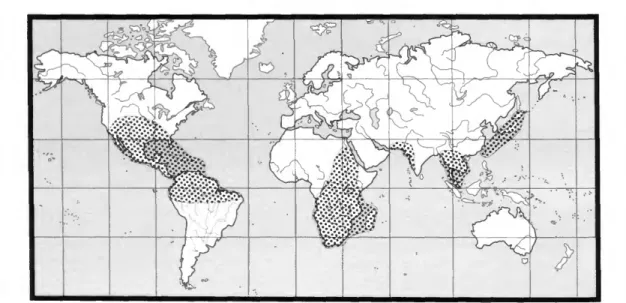
Paralimna (Paralimna) limbata Loew
Adults of the limbata group are outwardly similar, especially in overall shape, but some structures of the male terminalia differ markedly, especially the presurstylus (see species descriptions). Other structures of the male terminalia, such as the postsurstylus, aedeagal apodeme, aedeagus, and gonit, are, however, very similar. The Phaiosterna sister group is not as well established, although there is some external similarity to the limbata species.
Otherwise, especially in allopatric populations, the only reliable characters are those of the male terminalia.
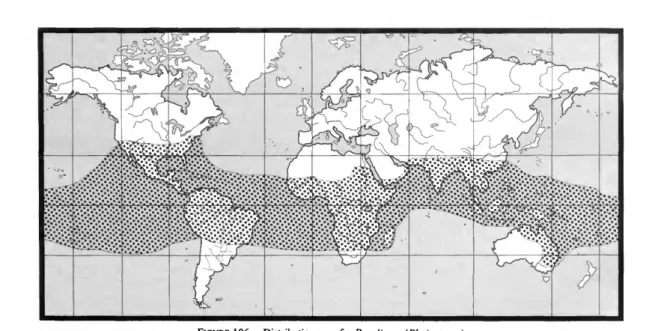
Paralimna (Phaiosterna) bicolor (Macquart)
DIAGNOSIS.—This species is distinguished from congeners, especially those of the subgenus Phaiosterna, by the following combination of characters: color variable but tending to be brown to greyish brown, moderately microtomentose, at most subglabrous; 1st flagellomere without crest, or crest of long, whitish setulae along dorsum and dorsal portion of rounded apex much shorter than V2 height of 1st flagellomere; apex of 1st flagellomere with dorsoapical angle more angular than posteroapical angle; mesonotum mostly uniform, gray to dark brown, dull to subgloss, with moderately dense gray to brown microtomentum, consistently darker medially, between dorso-central setae; ventral apex of male foretibia lacking numerous long, slender setulae; posterior surface of forebasitarsus lacking scattered long, slender setulae; and aedeagus wider than long in dorsal view, somewhat rectangular with distal corners rounded, and in lateral view with distal aspect of sclerotized portion slightly concave and actual apex of aedeagus as a pointed process projecting into an anteroventral angle. Thorax (Figure 118): Generally grayish brown to black, legs darker, black with some grayish microtomentum; mesonotum moderately dense gray to grey-brown microtomentose, appearing dull to sub-glossy, often with brown, short to long. Abdomen: Slightly to distinctly lighter in color than mesonotum, mostly brownish gray to brownish black; tergites usually fascicate, with anterior portion of tergites darker gray to brownish black, less microtomentose, posterior portion more densely microtomentose, grayer.
Male terminalia (Epandrium figures in reverse U-shaped in reverse view (Figure 119), width about equal throughout length with dorsal margin of grain cavity broadly rounded; cercus acutely pointed posteriorly and in abdomen, medial border almost straight; presurstyli in posterior view (Figure ) connected medially, forming a shallow arched and narrowed band medially on ventral border of cerci, produced ventrolaterally as narrow projections on triangular in shape; postsurstylus in lateral view (Figure 121) with anterior margin apically bifurcated, more anterior and shorter than narrow lobe posterior lobe expanded, bearing several setulae on medial side and 2 longer setulae slightly above bifurcation; gonite short, ovate; aedeagal apodeme with symmetrical keel (Figure 121), attachment with base of aedeagus recurved towards cap, attachment with hypandrium slightly curved Aedeagus broadly rounded at apex, then forming a point short and narrow (Figure 120); lateral aedeagal processes broad throughout length, broadly rounded at apex, held close to lateral margins of aedeagus; hypandrium deeply invaginated, pocket-like (Figures 120, 121).
Paralimna (Phaiosterna) fusca Bock
DIAGNOSIS.- This species is distinguished from congeners, especially those of the subgenus Phaiosterna, by the following combination of characters: first flagellomere without a fringe or a fringe of long, whitish setae along the back, and a dorsal part of a rounded apex much shorter than the height of Vfe 1st flagellomere; . DESCRIPTION.—Small to medium-sized shore flies, body length 2.15-3.0 mm; generally dark, whitish gray to brown species, moderately densely to densely microtomentose, dorsum mottled, opaque to slightly shiny, especially mesonotum. Abdomen: slightly lighter in color than mesonotum, mostly greyish brown; anterior part of tergites fasciated, dark gray to brown, less microtomentose.
DIAGNOSIS.—This species is distinguished from congeners, especially those of the subgenus Phaiosterna, by the following combination of characters: the first flagellomere lacks the edge or edge of the long, whitish setae along the back and the dorsal part of the much shorter rounded apex that the V2 height of the 1st flagellomere;.
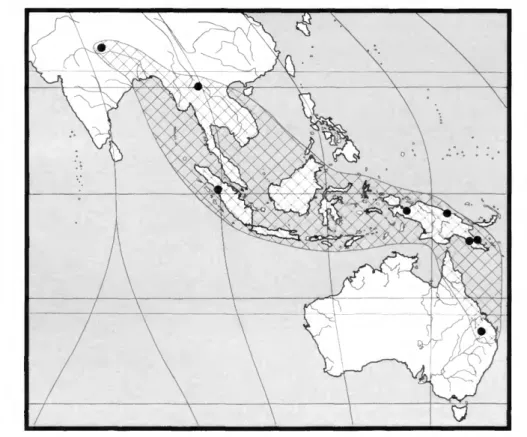
D—Papuama ismayi
A systematic annotated arrangement of the genera and species of the Neotropical Ephydridae (Diptera), II: The Subfamily Notiphilinae. A systematic annotated arrangement of the genera and species of the Ethiopian Ephydridae (Diptera), II: The Subfamily Notiphilinae. Papavero, editor, A Catalog of the Diptera of the Americas South of the United States, pages 1-43.
A new reconstruction of the origin of Eremoneuran Hypopygium and its implications for classification (Insecta: Diptera).

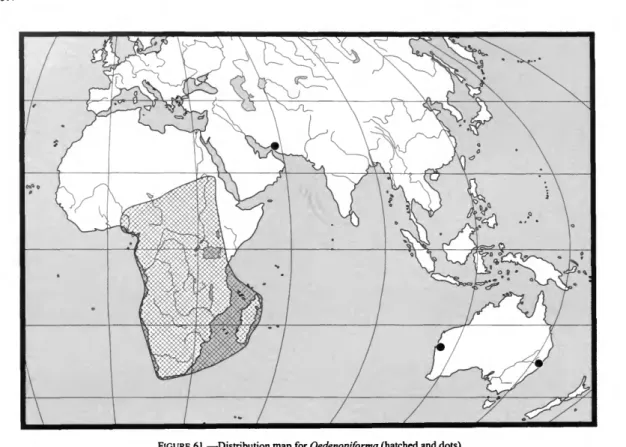
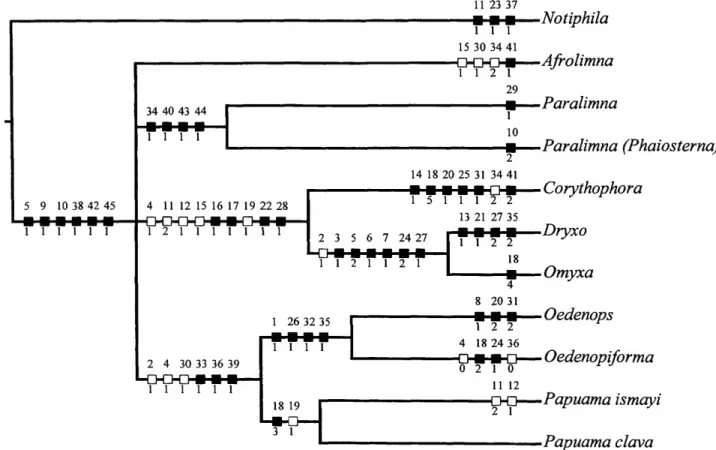
![TABLE 2.—Analysis of characters based on the cladogram (figure 154) and weights (varying between 1 and 10) and status of characters after successive weighing (+ = additive; - = nonadditive; [ = active; ] = inactive).](https://thumb-ap.123doks.com/thumbv2/123dok/11144329.0/105.865.447.791.184.839/analysis-characters-cladogram-characters-successive-weighing-additive-nonadditive.webp)